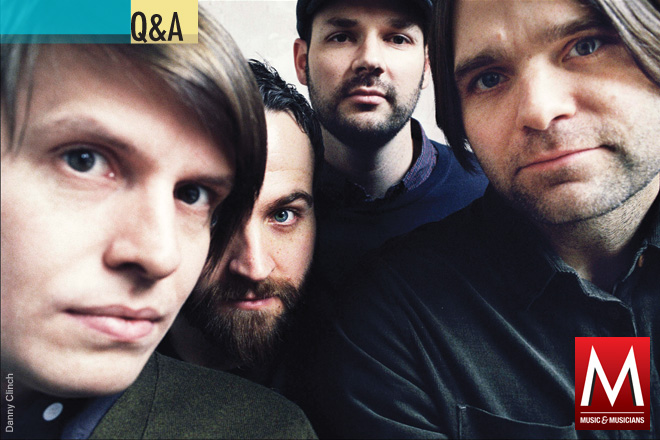ARCTIC MONKEYS
After a frenzied five years, it’s time to take a look back—briefly
The Arctic Monkeys instantly became a sensation in their native England upon the release of their punchy, hard-charging debut, Whatever People Say I Am, That’s What I’m Not. “It’s only been five years, but it seems like a long time ago,” observes frontman Alex Turner. Before heading into the studio to make the new Suck It and See, Turner and his bandmates revisited their first album to determine how far they’d come—and what they might have lost along the way. Turner spoke to us about how the Monkeys got their groove back.
How did you approach the album?
We tried to write more songs in major keys this time, which is something we shied away from on the last record. And after I’d written a couple songs, [guitarist] Jamie [Cook] came over and we decided to listen to the first record. It was the first time I’d listened to that record in five years.
How did it sound?
It had been a long time, and we thought it would be quite funny—and it was. We had a laugh. I realized that we’d moved on quite a bit since then. One thing about that record, though, is that it was very organized. I had these songs, these solid foundations, and I remember going into that recording being very organized and having the track order in mind. I wanted to do that again.
What else influenced your writing?
This was the first time I’d written not on the ground floor. You can use that as a metaphor however you like. I was up on the fourth floor in New York, and there’s a bit more sky on this album, a bit more weather. Maybe that’s a product of staring out the window and being higher up.
How does the group write together?
Previously our songs had come from practice rooms, just hashing it out. A riff here, a riff there, sometimes it’d come from the drums—and we’d piece everything together like a puzzle. This time they came from things I had written on acoustic guitar. We each applied to the song what we felt was going to do it the most favors in terms of the playing. That happened a lot on this album.
Do you record live in the studio?
We always have, but not to this degree before. We didn’t fix anything, we just got a good take and kept it. We wanted to strip it back and not do tons of overdubs. If we were going to do a guitar overdub, it was usually a double of the solo or the chime-y part. We discovered this chime-y, Byrds-y sound. Jamie and I learned how to play the other three strings on the guitar. (laughs) We’d never been down there before—or up there, depending on which way you looked at it.
How have you changed?
After the first album there was a bit of a frenzy, and we really didn’t know what was going on. We got quite defensive as a reaction, but we’re in a good place now. We’ve gotten comfortable, certainly more comfortable than we were when that album blew up. Don’t get me wrong: We had a great time, and it was awesome to get a No. 1 single in the U.K. [“I Bet You Look Good on the Dancefloor”] That was unusual for a guitar band. But it wasn’t at all what we set out to do. We set out to make good records, and that’s where our focus remains.
–Eric R. Danton




comment closed